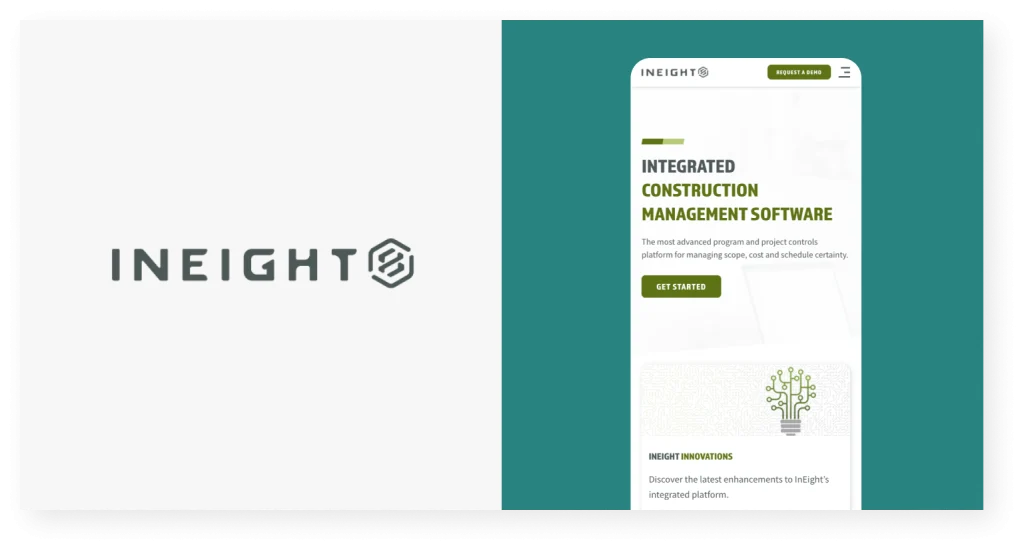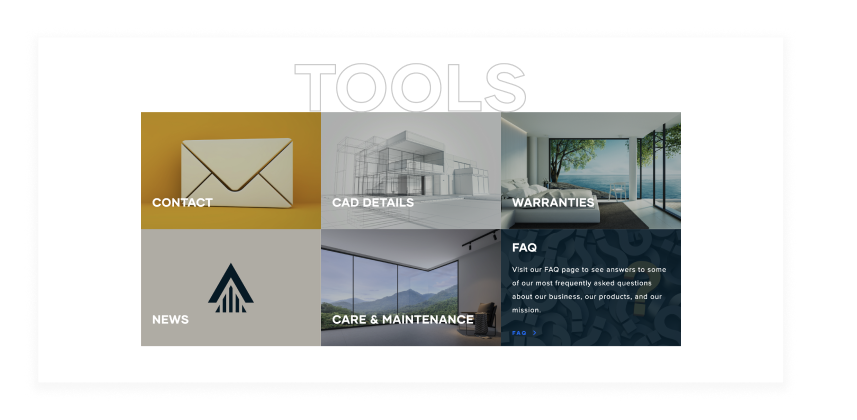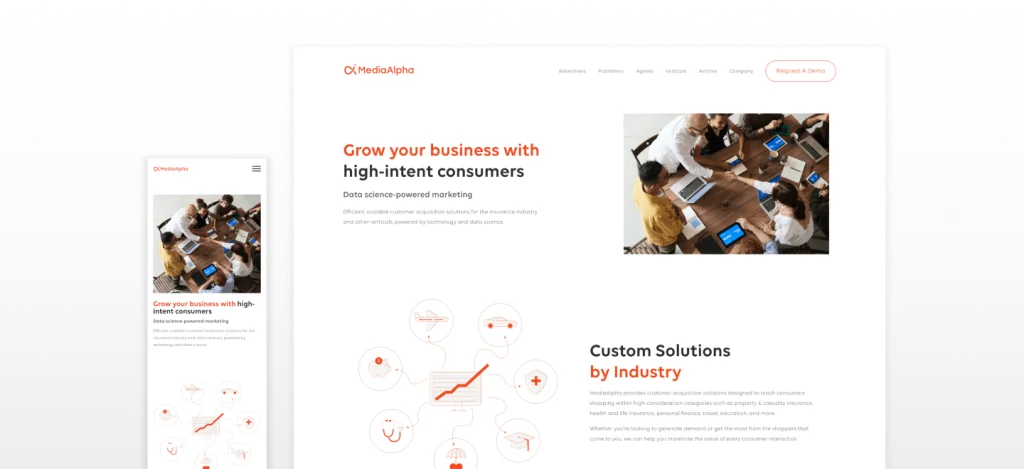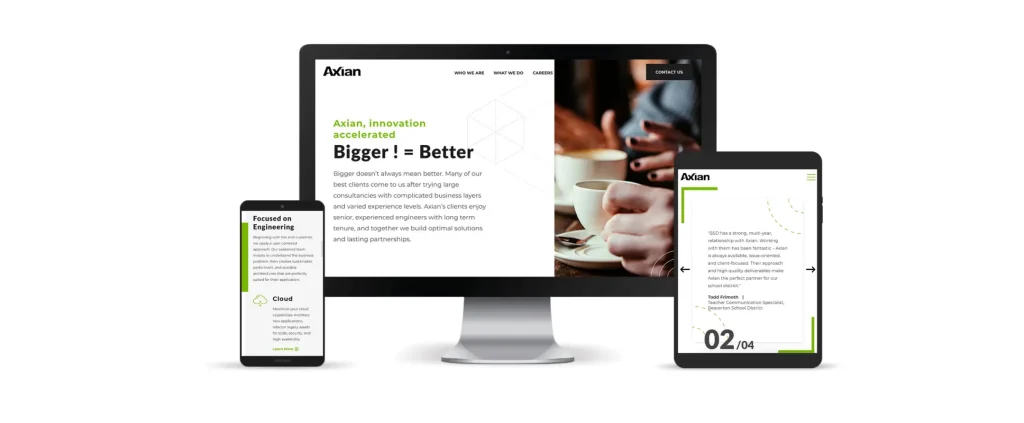If you’re asking yourself why and how often a website redesign should happen, chances are, it’s time to redesign your website.
A website redesign is often something business leaders put off until the last possible minute, especially if they’ve had negative experiences with the redesign project in the past.
Maybe your last redesign was more expensive than you anticipated, or it took way longer than it needed to. Maybe you hired a web design agency you didn’t work well with, or you simply didn’t have the capacity to give the project your all.
Whatever the case may be, you might be wondering how often a redesign is really necessary. While there’s no one set time frame that works best for all businesses, we generally recommend a redesign every 2-3 years. Conversations about your next redesign and marketing strategy should be initiated around the 2-year mark.
However, there are situations that may warrant a redesign sooner than later. Let’s take a dive into the factors that can influence the best time for your website redesign and how you can determine the best time frame for your business.
Why Redesign A Website?
Depending on the scope, a website redesign project can take anywhere from three to six months to complete. Because of the amount of time and resources involved, you don’t want to initiate the redesign process when it’s not necessary. You also want to make sure you have a website redesign strategy in place to create the most effective website design possible.
Regardless of how long it has been since your last redesign, here are some factors that make a redesigned website essential to your marketing strategy.
Your Branding Has Changed
Any time your company goes through a rebrand, it’s important to follow suit with your existing website. Your website is often the first interaction potential customers will have with your business, and your brand will only be memorable if it’s consistent through the entire website.
This could mean redesigning your new website to update elements such as:
- Fonts
- Colors
- Logos
- Imagery
- Tone/voice
- Taglines
- The user experience
- Visual aspects
- Brand identity
- The user interface
- Landing page designs
Your Business Goals or Site Objectives Have Changed
While not having a website in the digital age is a non-option, each site has a purpose beyond simply existing. When that purpose changes or your business direction pivots, a website redesign is always in order.
For example, let’s say your company sells materials to local businesses that manufacture electronics. You’ve maintained a storefront for local B2B customers for 20 years, but you’ve recently determined that you could double your profit by expanding your target audience to companies elsewhere by setting up an e-commerce site.
Instead of making your website visitors get directions to your store or call in an order, you now want to direct them to your e-commerce store to make purchases via your checkout page. This means redesigning your website, updating your messaging, calls to action (CTAs), site structure, design elements and more to match your new objectives.

Changes to Your Target Audience
Because the largest goal of your website is to speak directly to your target audience to persuade them into a purchase, changes to that audience also warrant a website redesign.
A redesign allows you to align your website’s overall aesthetic, content strategy, and user experience with the new audience’s expectations, making it more engaging and relevant to them.
By understanding the preferences, behaviors, and pain points of your updated target audience, you can tailor the website’s design and content to better resonate with them, ultimately increasing user satisfaction and conversion rates.
Ignoring the changes in your target audience may lead to a disconnect, driving potential clients away and hindering your site performance. Embracing a redesign with your new audience in mind demonstrates your commitment to meeting their demands and staying ahead in a dynamic digital landscape.
For example, if you have a SaaS product that simplifies project management for HR consultants and decide to expand your target audience to HR departments at large corporations, your website’s imagery, messaging, CTAs, user experience and more will all need to change.
Poor User Experience
Does your website work? It may seem like a silly question, but if your site isn’t functional for your website visitors, the need for a redesign is obvious.
Nearly 90% of consumers say they are less likely to return to a website if they had a bad user experience. If your site isn’t focused on providing a good user experience, having a website at all may be doing more harm than good.
To determine whether your site may be lacking in the UX space, ask yourself the following.
- Do your pages, images and videos load quickly? Are there any missing images?
- Does your site have a responsive design for mobile devices?
- Is your site easy to navigate?
- Does your site have clear CTAs?
- Is your site accessible?
- Is your site appealing to look at?
- Does your content have a purpose?
- Is your website converting visitors?
- Does your website have a high bounce rate?
If you answered “no” to some or most of these questions, a website redesign plan should be in your near future.
Your Website Isn’t Showing Up in Search
Of course, a beautiful website design doesn’t mean much if no one can find it.
There could be several reasons why your website isn’t showing up in search engine results. A few may include:
- Your site might not be properly optimized for search engine result pages, lacking relevant keywords and meta tags
- Technical issues like slow page loading times or broken links can hinder search engine crawlers from properly indexing your site
- If your website has been penalized for violating search engine guidelines, it could be excluded from search results altogether
- Your site lacks mobile responsiveness, making it less appealing for search engines
Was search engine optimization (SEO) a large part of your last website redesign process? If not, a new design focused on SEO could significantly improve your business, leading to:
- Increased sales
- More leads captured
- Increased organic traffic
- An expanded audience
- Improved visibility
- Increased site performance
- Appearing on more search engine results pages
New Integrations
Sometimes a full redesign is necessary to improve your site’s technical aspects. As businesses evolve, so do their requirements for a robust online presence.
When the need arises to integrate new features like e-commerce capabilities, advanced analytics tools, or a customer relationship management (CRM) system, your current website might not have the infrastructure to support such additions.
By undertaking a comprehensive redesign, you can create a more versatile and scalable website that accommodates your expanding needs and seamlessly incorporates the latest technologies and website security.
A technically enhanced website enables you to stay competitive, streamline business operations, and offer a more personalized and efficient user journey. It not only facilitates the smooth implementation of new features but also ensures that your website remains compatible with various devices, browsers, and emerging digital trends.

Your Competitors Are Doing It
The last thing you want is to lose some of your competitive edge simply because your competitors have better websites than yours.
Take some time to compare the design and functionality of your competitor’s site to yours. Ask yourself these questions to understand where you stand compared to your competitors:
- Do your competitors have better website aesthetics and functionality?
- Does your user experience compare to your competitors?
- Is your overall messaging similar or better?
- Would mobile users prefer to visit your site over your competitors?
- Does your content and design feel up to date?
In a digital world, keeping up with your competitors’ website redesign efforts is extremely important to remain relevant, deliver an exceptional user experience, and achieve business growth. Regularly evaluating and enhancing your website based on your competitors’ actions can help you stay ahead and position your brand as a leader in your industry.
Lack of Results
In the end, every website has a purpose – to help your business grow. If yours isn’t returning the results you were hoping for in terms of sales, lead generation, traffic patterns or other key metrics, a website refresh is in your best interest.
Your marketing efforts should work seamlessly with your website, not be hindered by it.
If you find your team lacks a clear conversion strategy within your website, it’s time to find a marketing agency that specializes in supporting a more holistic approach to website redesigns.
Your conversion strategy should be an integral aspect of your website. Without a well-defined conversion strategy, your website might fail to capitalize on its traffic and potential, resulting in missed opportunities to engage and convert visitors into loyal customers or valuable leads.
Staying on top of your conversions can provide valuable insights into your audience’s interests and help you create more effective landing pages.

How to Decide When It’s Time for a Redesign
Even without the occurrence of these special circumstances, all websites need to be redesigned every couple years to stay current with trends and society’s ever-changing visual preferences.
If there’s no steadfast rule for how often you should be redesigning your website, then how do you know when YOUR site needs a little TLC? Consider the following.
Website Redesign Checklist
Questions to ask yourself include:
- Does your site look modern or outdated?
- Is your website scalable enough to keep up with your company’s growth?
- Is your website mobile friendly?
- Is your website better than your competitors’ sites?
- Is your site a good reflection of the quality of your product or service?
- Has technology changed and impacted your site’s functionality?
- Have you updated your existing content in the last 3 years?
- Do you have high bounce rates and/or low conversions?
- Do you have a low search engine ranking?
- Is your website user friendly?
- Is your current site working towards your business goals?
- Does your current content management system feel intuitive for you and your team?
- Is it costly to make changes to your current site, and could these be avoided with a new site design?
- Is your website easy for back end users to edit content?
- Is it simple to add new pages?
Remember that your website is often a first impression of your brand. Are you putting your best foot forward?
Tips for an Effective Website Design
If a website redesign is in your future, you may be wondering, “What makes an effective website design, anyway?”
The best designs will be customized to your unique niche, target audience and value proposition, but there are some best practices you can follow to help your site work in your favor.
Repetition in Design Patterns and Layouts
Providing your website visitors with an easy experience is critical. Using repetitive design patterns and structures can help visitors become accustomed to the formatting to find information easier.
Site Speed Optimization
If you’re experiencing high bounce rates, it may simply be because your website is too slow. The first five seconds of a page’s loading time have the highest impact on conversion rates. If your website isn’t loading in under 3 seconds, especially your high-traffic pages, then there’s room for improvement.
Buyer Journey Mapping
Your website’s architecture should be based on user research and strategy. Before beginning a website redesign, it’s important to create a journey map for the information and resources you’re providing at each stage in the buyer’s decision-making journey.
For example, are you:
- Helping potential customers define their problem?
- Providing materials that help customers see the value in your solution?
- Speaking to their concerns?
- Giving clarity around how your solution differs from competitors?
- Understanding user behavior and guiding them on what to do next?
Consider using a tool like Google Analytics to monitor your audience’s behaviors so you can make more strategic decisions.
Including Clear, Actionable CTAs
What is it that you want your website visitors to do if they’re interested in your product or service? Are you making that obvious to them?
Clear CTAs increase the likelihood that a website visitor will engage with your brand. CTAs should be:
- Concise
- Easy to read
- Value-oriented
- Attention-grabbing
- Actionable
- Easy to find
Use Visuals to Demonstrate Your Value
If you’re selling a product, use media to show your product in action. This can be done through the use of product demos, instructional infographics and user-generated videos that show how other customers are using it. You can also create interactive models to show your product from different angles.
Visuals can also be effective for selling services. Use step-by-step infographics or animation to demonstrate how the service works and the value it brings to your target audience.
Kickstart Your Website Redesign
A website redesign can be costly and time-consuming, which is why it’s critical that you get it right from the very beginning. The easiest way to ensure an effective website design is to work with a web design agency that specializes in design and development.
Motion Tactic has expertise in redesigning websites that increase traffic, conversions and revenue. Schedule your discovery session!



